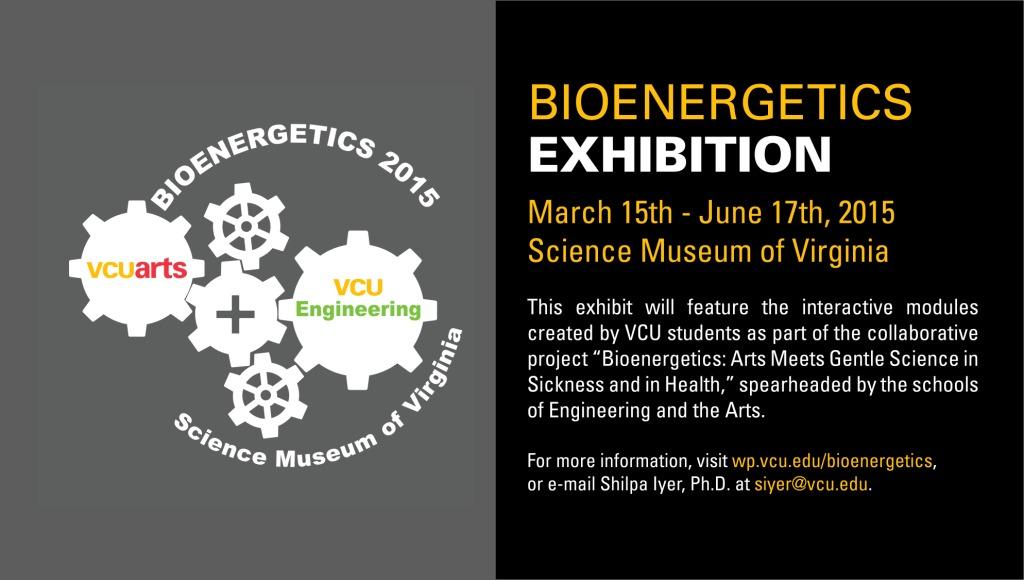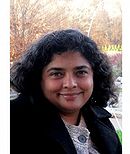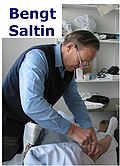Difference between revisions of "Gentle Science"
| Line 1: | Line 1: | ||
[[Image:BB-Bioblast.jpg|left|70px|link=Bioblast:About|Bioblast wiki]] | [[Image:BB-Bioblast.jpg|left|70px|link=Bioblast:About|Bioblast wiki]] | ||
__TOC__ | __TOC__ | ||
'''Gentle Science''' recognizes the special responsibility of the scientific community, for the quality of science, the quality of life in science, and its mission. While the individual scientist contributes her/his share, the scientific community requires concerted actions to encourage Gentle Science on institutional, national and world-wide levels. | '''Gentle Science''' recognizes the special responsibility of the scientific community, for the quality of science, the quality of life in science, and its mission. While the individual scientist contributes her/his share, the scientific community requires concerted actions (see [[Mitochondrial Global Network |MitoGlobal]]) to encourage Gentle Science on institutional, national and [[#The Vancouver Protocol, ICMJE, and Gentle Science |world-wide levels]]. [[#Notes|[Notes a,b]]]. | ||
| Line 8: | Line 8: | ||
[[Image:Shilpa Iyer-253x300.jpg|130px|link=Iyer S|Shilpa Iyer]] '''[http://wp.vcu.edu/bioenergetics/ Bioenergetics - Arts meets Gentle Science in Sickness and in Health]''' | [[Image:Shilpa Iyer-253x300.jpg|130px|link=Iyer S|Shilpa Iyer]] '''[http://wp.vcu.edu/bioenergetics/ Bioenergetics - Arts meets Gentle Science in Sickness and in Health]''' | ||
* A Gentle Science project initiated by [[Iyer S |Shilpa Iyer]]. ''More information:'' | * A Gentle Science project initiated by [[Iyer S |Shilpa Iyer]]. ''More information:'' [[Iyer 2014 Abstract MiP2014 |MiP2014 Abstract]]. | ||
* Shilpa Iyer proposed the term ‘Gentle Science’ at a dinner following an OROBOROS workshop in Innsbruck, Dec 2009. And the response was clear and explicit: '''''[[#QA and Gentle Science |Gentle Science Shapes the World]]'''''. | * Shilpa Iyer proposed the term ‘Gentle Science’ at a dinner following an OROBOROS workshop in Innsbruck, Dec 2009. And the response was clear and explicit: '''''[[#QA and Gentle Science |Gentle Science Shapes the World]]'''''. | ||
== The Vancouver Protocol, ICMJE, and Gentle Science == | |||
It is fair to say that the '''Vancouver Protocol''' carries the spirit of Gentle Science, as further developed and updated in the ''''Recommendations for the Conduct, Reporting, Editing, and Publication of Scholarly Work in Medical Journals'''' by the International Committee of Medical Journal Editors (ICMJE). Do all involved editors (''SI'' units), most authors and peer reviewers know that? | |||
The following points are direct quotes from <ref> International Committee of Medical Journal Editors. Uniform requirements for manuscripts submitted to biomedical journals. N Engl J Med 1991; 324:424-8. »[http://www.nejm.org/doi/full/10.1056/NEJM199102073240624 Open Access] </ref>. ''This document is not covered by copyright: it may be copied or reprinted without permission''. For an update see <ref> [http://www.icmje.org/icmje-recommendations.pdf International Committee of Medical Journal Editors <nowiki>[www.icmje.org/icmje-recommendations.pdf]</nowiki>. Recommendations for the Conduct, Reporting, Editing and Publication of Scholarly Work in Medical Journals. Updated Dec 2014 <nowiki>[2015-01-06]</nowiki> Available from: http://www.ICMJE.org.] </ref>. The quoted points are a selection of topics with direct implications on Gentle Science. The selection is not intended to be complete or exclusive, but is meant to motivate further reading, discussion and action in the spirit of Gentle Science: | |||
* '''Prior and duplicate publication:''' When submitting a paper an author should always make a full statement to the editor about all submissions and previous reports that might be regarded as prior or duplicate publication of the same or very similar work. | |||
* '''Authorship:''' All persons designated as authors should qualify for authorship. .. Each author should have participated sufficiently in the work to take public responsibility for the content. .. Participation solely in the acquisition of funding or the collection of data does not justify authorship. | |||
* '''Methods:''' Identify the methods, apparatus (manufacturer's name and address in parentheses), and procedures in sufficient detail to allow other workers to reproduce the results. Give references to established methods. | |||
* '''Statistics:''' Give details about randomization. Describe the methods for and success of any blinding of observations. | |||
* '''Units of measurement:''' All hematologic and clinical-chemistry measurements should be reported in the metric system in terms of the International System of Units (SI). | |||
'''References''' | |||
<references/> | |||
| Line 44: | Line 63: | ||
'''Gottfried Schatz''' published a book on the history of bioenergetics, from a personal point of view with a broad perspective on post-war science in general and mitochondrial bioenergetics in particular. The classical period of bioenergetics, culminating in the Nobel Price for Chemistry awarded to Peter Mitchell in 1978, is well known for not only fiercly competitive but personally aggressive disputes. The book [[Schatz 2011 Wiley VCH,Weinheim,NZZ Libro|'Feuersucher - Die Jagd nach dem Geheimnis der Lebensenergie' by Gottfried Schatz (2011)]] could have another subtitle: The emergence of Gentle Science. See '''Open Access article''': <ref> [http://www.annualreviews.org/doi/pdf/10.1146/annurev-biochem-081009-125448 Schatz G (2012) The fires of life. Annu Rev Biochem 81:34–59.] </ref>. | '''Gottfried Schatz''' published a book on the history of bioenergetics, from a personal point of view with a broad perspective on post-war science in general and mitochondrial bioenergetics in particular. The classical period of bioenergetics, culminating in the Nobel Price for Chemistry awarded to Peter Mitchell in 1978, is well known for not only fiercly competitive but personally aggressive disputes. The book [[Schatz 2011 Wiley VCH,Weinheim,NZZ Libro|'Feuersucher - Die Jagd nach dem Geheimnis der Lebensenergie' by Gottfried Schatz (2011)]] could have another subtitle: The emergence of Gentle Science. See '''Open Access article''': <ref> [http://www.annualreviews.org/doi/pdf/10.1146/annurev-biochem-081009-125448 Schatz G (2012) The fires of life. Annu Rev Biochem 81:34–59.] </ref>. | ||
<references/> | |||
| Line 87: | Line 108: | ||
{{Gentle Science}} | {{Gentle Science}} | ||
Revision as of 04:15, 6 January 2015
Gentle Science recognizes the special responsibility of the scientific community, for the quality of science, the quality of life in science, and its mission. While the individual scientist contributes her/his share, the scientific community requires concerted actions (see MitoGlobal) to encourage Gentle Science on institutional, national and world-wide levels. [Notes a,b].
Bioenergetics - Arts meets Gentle Science

 Bioenergetics - Arts meets Gentle Science in Sickness and in Health
Bioenergetics - Arts meets Gentle Science in Sickness and in Health
- A Gentle Science project initiated by Shilpa Iyer. More information: MiP2014 Abstract.
- Shilpa Iyer proposed the term ‘Gentle Science’ at a dinner following an OROBOROS workshop in Innsbruck, Dec 2009. And the response was clear and explicit: Gentle Science Shapes the World.
The Vancouver Protocol, ICMJE, and Gentle Science
It is fair to say that the Vancouver Protocol carries the spirit of Gentle Science, as further developed and updated in the 'Recommendations for the Conduct, Reporting, Editing, and Publication of Scholarly Work in Medical Journals' by the International Committee of Medical Journal Editors (ICMJE). Do all involved editors (SI units), most authors and peer reviewers know that?
The following points are direct quotes from [1]. This document is not covered by copyright: it may be copied or reprinted without permission. For an update see [2]. The quoted points are a selection of topics with direct implications on Gentle Science. The selection is not intended to be complete or exclusive, but is meant to motivate further reading, discussion and action in the spirit of Gentle Science:
- Prior and duplicate publication: When submitting a paper an author should always make a full statement to the editor about all submissions and previous reports that might be regarded as prior or duplicate publication of the same or very similar work.
- Authorship: All persons designated as authors should qualify for authorship. .. Each author should have participated sufficiently in the work to take public responsibility for the content. .. Participation solely in the acquisition of funding or the collection of data does not justify authorship.
- Methods: Identify the methods, apparatus (manufacturer's name and address in parentheses), and procedures in sufficient detail to allow other workers to reproduce the results. Give references to established methods.
- Statistics: Give details about randomization. Describe the methods for and success of any blinding of observations.
- Units of measurement: All hematologic and clinical-chemistry measurements should be reported in the metric system in terms of the International System of Units (SI).
References
- ↑ International Committee of Medical Journal Editors. Uniform requirements for manuscripts submitted to biomedical journals. N Engl J Med 1991; 324:424-8. »Open Access
- ↑ International Committee of Medical Journal Editors [www.icmje.org/icmje-recommendations.pdf]. Recommendations for the Conduct, Reporting, Editing and Publication of Scholarly Work in Medical Journals. Updated Dec 2014 [2015-01-06] Available from: http://www.ICMJE.org.
Bengt Saltin - a great Gentle Scientist
03.06.1935 - 12.09.2014
The scientific community is deeply saddened by the loss of a great scientist, a Gentle Scientist and friend.
Words of condolence at office@sport-science.org
Bioblast Conference
Bioblast 2012 (Innsbruck, 2012-Dec-10 to 12) is organized in the spirit of Gentle Science.
- Gnaiger E (2012) Gentle Science and the Bioblast Conference. Mitochondr Physiol Network 17.12.
- Kliemt U, Gnaiger E (2012) Power and efficiency: Tempo giusto in classical music, thermodynamics and industrial revolution, and the speed of life. Mitochondr Physiol Network 17.12.
- Iyer S (2012) Gentle Science in the real world of mitochondrial physiology and genetics. Mitochondr Physiol Network 17.12.
- The link to the 2-minute video can be found at http://youtu.be/9hgrvgAP934. Please share it with others Shilpa Iyer.
Sir John Walker - Honorary Gentle Science Member of MiP
Nobel laureate Sir John Walker (Cambridge MBU, UK; Nobel prize 1997 in chemistry) has joined the MiPsociety as the first 'Honorary Gentle Science Member' of the Mitochondrial Physiology Society, following his presentation of 'The ATP Synthase' at the MiPsummer School 2012 on July 10 in Trinity Hall, Cambridge.
From fierce competition to Gentle Science
Gottfried Schatz published a book on the history of bioenergetics, from a personal point of view with a broad perspective on post-war science in general and mitochondrial bioenergetics in particular. The classical period of bioenergetics, culminating in the Nobel Price for Chemistry awarded to Peter Mitchell in 1978, is well known for not only fiercly competitive but personally aggressive disputes. The book 'Feuersucher - Die Jagd nach dem Geheimnis der Lebensenergie' by Gottfried Schatz (2011) could have another subtitle: The emergence of Gentle Science. See Open Access article: [1].
QA and Gentle Science
At the dinner following the summary session of the QA Workshop on ‘Respirometry of Permeabilized Muscle Fibres: Towards Quality Assurance in the Diagnosis of Mitochondrial Function’ (2009 December 9-12; Innsbruck, Austria), the discussion turned to the limited degree of freedom available in our world of competitive science to implement quality rather than quantity in the publication strategies of scientists. We are all fighting with the overload of new publications, many of which lack the quality that would be desirable in the spirit of true progress. What would be an alternative? Are we catering for Fast Food (i.e. frequently junc food) in science? Do we need a Slow Food (Slow Science) movement? Then Shilpa Iyer proposed ‘Gentle Science’, and the response was clear and explicit: Gentle Science Shapes the World, signed by all participants at the dinner discussion (see Signatures; the table napkin was donated by the restaurant ‘Glasmalerei’; several workshop participants had to leave the QA workshop before the summary discussion)..
Discussion
General discussion on Gentle Science
-> Continue the discussion: Talk:Gentle Science
Open access publication
- The topic of Open access publication should be taken into serious consideration by Gentle Science.
-> Continue the discussion: Open Access
Network
- Several initiatives contribute to a science in the spirit of 'Gentle Science'.
-> We welcome further contacts in the Gentle Science Network.
Quotes
- For first steps, see: 'powerful, efficient, and more gentle ..'.
- Open science - Open access - Open innovation [Notes c,d].
- Unexamined science is not worth practicing/publishing.
- Gentle Science develops and implements the concept of Scientific Social Responsibility (SSR), complementary to Corporate Social Responsibility (CSR). Combine large scientific footprints with small environmental footprints; implement strategies of sustainability: climate change in the laboratory [Note e]
- Gender balance at all levels.
- Young scientists balance.
- Gentle Science aims at quality that should not be compromised for the sake of quantity, speed, or ‚first to publish’. From maximization to optimization [Note f]
- Gentle Science implements Better Practice and Quality Assurance explicitly.
- Gentle Science supports new approaches, making possible an evolutionary improvement of the quality of scientific publications, for fair science, fair citation, … [Note g]
Notes
- (a) Does Gentle Science require a form of organization? – non-profit organization? – Gentle Science homepage? – Gentle Science network, linked on homepages – Gentle Science statements on homepages, Email signatures, letterheads – Encourage scientific societies and journals to engage in Gentle Science.
- (b) How can the scientific community provide positive feedback to the practice of Gentle Science, rather than supporting junk science (unfair citation hiding the priority of other groups; incomplete methods description, not disclosing important detail to potential competitors; presentation merely of published information at conferences, preventing open exchange on cutting-edge scientific progress; quick-and-dirty publication instead of implementation of QA, compromising quality for the sake of apparent priority; …)?
- (c) Published scientific information – largely supported by the society - should be accessible in general, without separation of privileged ‘rich’ institutions and limited access in underdeveloped countries. Open access and open-source initiatives should be supported.
- (d) Provide information on the specific responsibilities of each co-author in all publications: While an increasing number of journals requests author information, inclusion of this information should constitute a decision and responsibility of the authors even in cases when this information is not requested (for comparison, less important statements are found frequently in the acknowledgements section).
- (e) Climate change in the laboratory: Unnecessary waste production can be limited in scientific institutions, by implementation of energy-efficient and material-efficient technologies. Dischargeable tools should be replaced by application of re-usable tools whenever possible. Scientific institutions should be rated on the basis of their positive scientific impact and their positive environmental impact factor.
- (f) Optimization instead of maximization is required in strategies of scientific publication. While scientific output is still rated frequently on a totally non-scientific basis of ‘number’ of publications, simple mechanisms may be implemented by the scientific community to encourage quality rather than quantity. In job applications and project applications, for instance, a personal selection of very few ‘high quality and relevant’ publications should be requested, without further consideration of numbers of scientific publications (what are large numbers good for?).
- (g) Evolution of a scientific publication: Even when trying the best in completion of a publication, there is generally scope for making it better. Whereas a printed ‘paper’ is a final document of an original publication, any published pdf file can potentially be edited for further improving the quality of a publication (corrections, additions, re-interpretations, even short discussions). For instance, fair citation may not always be possible in the most optimal way, given the constraints on page limits, maximum number of references, and the impossibility of complete awareness by the authors of further relevant references. Additions, corrections and extensions are possible, however, in the form of supplementary materials that may be added even after publication, particularly on the basis of correspondence that may be initiated only after publication. As long as journals do not include supplementary materials after publication, this may be achieved by institutional or other homepages etc., where sections are linked to the relevant publications. Corrections and additions may then not be limited to ‘fair citations', but be extended to all other relevant supplementary information, which may be more useful and efficient than a ‘new’ publication.

